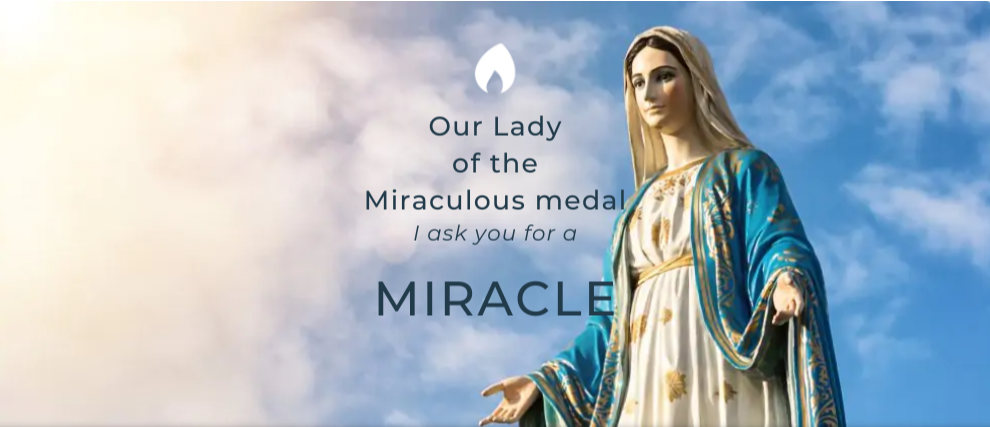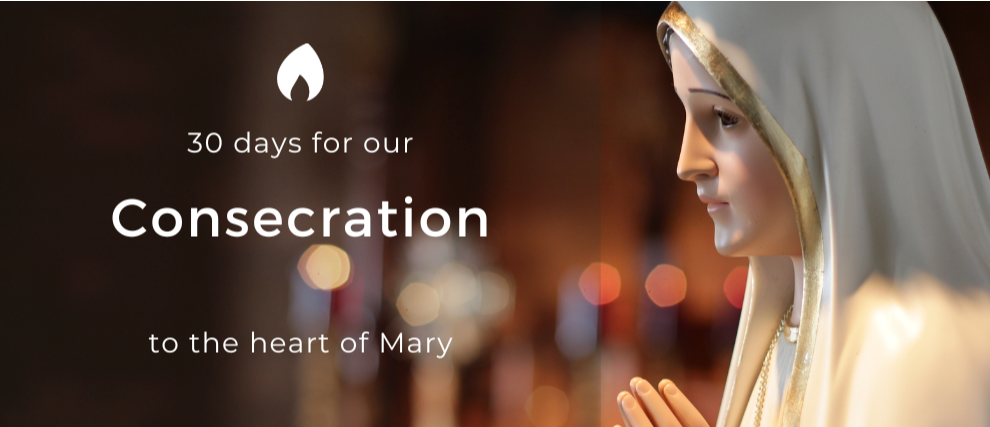Saint Catherine Labouré
Biography of Catherine Labouré
Zoé Labouré was born on May 2nd, 1806, in a Burgundy village, Fain-les-Moutier. She was the eighth of ten children of farmers. In 1815, her mother died, and Zoe chose the Virgin Mary as her mother. When her older sister entered the Daughters of Charity, Zoe, aged 12, became responsible for all household chores in the house and on the farm.
She wished to become a nun and entrusted her wish to her father. He opposed it because he wanted to marry her off. Finally, he sent her to Paris to help his older widower brother, who ran a restaurant. When he remarried in 1830, Zoé was given permission to begin her postulate with the Daughters of Charity. Three months later, she entered the Maison Mère, 140 rue du Bac in Paris, where she spent her training time. Newly arrived at the convent, she participated in a great procession of the transfer of the body of Saint Vincent de Paul, founder of the community of the Daughters of Charity. Catherine, who was deeply attached to him, went every day to pray to a relic of his heart. Three days in a row she had the vision of this first white heart, a sign of peace and union, then red, symbolizing the fire of charity and finally black, foreshadowing the imminent misfortunes that would befall France. Catherine also frequently saw Christ present in the wafer. In 1830, Catherine saw the Blessed Virgin three times. During these apparitions, the Mother of God revealed her mission to her, entrusted her with prophecies about France, and revealed to her the work she wished her to accomplish in Paris, including the dissemination of the miraculous medal. The young sister confided all this in her spiritual director, Father Aladel, a lazarist, who was skeptical. Yet when the revolutionary days of July came, he was shaken and listened to Catherine with more interest.
In 1831, Sister Catherine was appointed to the community of the Hospice of Enghien, in the commune of Reuilly. She was first in charge of the kitchen, then she cared for the dying and received the poor, she carried out all this with dedication. Catherine pronounced her vows on May 3, 1835. Shortly afterwards, she happily attended the first distribution of the miraculous medal in her community and witnessed the miracles that accompanied it. Unfortunately, several points were still missing to satisfy the requests of the Blessed Virgin: the apparition was still not commemorated, and the chapel still lacked the altar and the statue of the Virgin at the Globe. During the insurrection of 1848, life was very difficult at the hospice, food was lacking and Paris was covered with barricades. Catherine remained confident, “The Virgin will watch, she will keep everything. No harm will come to us. In fact, while the corpses are lined up on the sidewalks, the community would be miraculously spared.
After serving Christ and the poor for 46 years, Catherine died on December 31, 1876, in great peace.
Miracles and canonization of Catherine Labouré
Immediately after the death of Sister Catherine, news spread that it was this sister who saw the Blessed Virgin and was at the origin of the spread of the miraculous medal. In Paris, the miracles that took place thanks to the medal are well known, and the crowds grew around the body of the sister. A mother brought her little boy, paralyzed, and wanted to take him to the tomb. Before she could even make her move, her son rose, healed. This is Catherine Labouré's first miracle. After her death, her intact body remained supple and uncorrupted. She still rests today in a glass chest in the miraculous chapel of the Rue du Bac.
Catherine Labouré was beatified on May 28, 1933, by Pius XI and canonized on July 27, 1947, by Pius XII, who liked to call her “the saint of silence”. She is celebrated on November 28.
Apparitions
On July 18, 1830, the eve of the feast of Saint Vincent de Paul, whom she particularly loved, Catherine prayed to him for the grace to see the Blessed Virgin. Indeed, the young novice has already had visions of the heart of Saint Vincent and of Jesus in the host, but her strongest desire is to see the Mother of God. Her request will be granted that very evening. A mysterious little boy came to take her from sleep to the chapel of the convent, where “the Blessed Virgin is waiting for you”. Seeing the Blessed Virgin sitting on the priest's chair, Catherine ran towards her and laid her hands on her knees. During this first apparition, the Blessed Virgin would reveal to her prophecies concerning France and the mission to which she was called.
At the second apparition, on November 27, 1830, Catherine saw the Blessed Virgin in the chapel during the novice prayer. She then saw two living paintings in which the Blessed Virgin stands on the Earth's half-globe, her feet crushing the serpent. It is during this apparition that the Blessed Virgin showed Catherine the model of the miraculous medal.
The third and last apparition took place in December 1930, this time the Blessed Virgin appeared behind the altar, near the tabernacle. The Queen of Heaven came to confirm her mission and to bid her farewell: “You won't see me again.” The young sister confided all this in her confessor, who advised her not to think about all these “figments of imagination.” Yet the work had only just begun.
The miraculous medal
While Sister Catherine had her last appearance and was sent to the hospice of Enghien, she still heard an inner voice that urged her to carry out the requests of the Blessed Virgin by creating a medal. Catherine went back to talk to Father Aladel, her confessor. Faced with the situation of great insecurity, and the seriousness of the cholera epidemic, she began to strike the medal. The Sisters of Charity distributed them, and miraculous healings occurred. The people of Paris call the medal “miraculous.” Demands grew and new medals were constantly being made, in 1835 there were already more than one million, four years later ten times as many, and at the death of Sister Catherine there were more than one billion medals spread all over the world.
Prayers to Saint Catherine Labouré
Prayers of Saint Catherine
When I go to the chapel, I stand there before God, and I say to him:
“Lord, here I am, give me what you want”
If he gives me anything, I am very happy and I thank him.
If he doesn't give me anything, I thank him again because I don't deserve more.
And then I tell him all that comes in my mind: I tell him my sorrows and my joys and I listen.
If you listen to Him, He will also speak to you because with God, you have to say and listen,
He always talks when you go in simply and well.
To entrust her personal intentions to the Virgin of the rue du Bac, you can pray the “novena to Our Lady of the miraculous medal”.
Deed of Consecration
O Mary conceived without sin Mother of God and Mother of men, disciple of Christ Jesus, you are blessed amongst all women and all generations proclaim you blessed.
Model of consecration to God, that Saint Catherine Labouré, who had just lost her mother, chose for Mother, in turn I choose you for Mother, in order to consecrate myself to God our Father.
Standing at the foot of the Cross, your immaculate Heart has been pierced with pain like a sword, and your heart is united to the Heart of your Son.
Since grace springs from the Sacred Heart of Jesus, on all of us, through your hands, accept my whole being, dispose of me, body and soul, to follow Christ and receive the light and power of the Holy Spirit.
As a sign of this consecration, I will wear the holy medal with confidence so that the God of Love, Father, Son and Holy Spirit, reigns in my baptized heart and in all hearts.
His is the honor and the glory for ever and ever. Amen. Amen.

